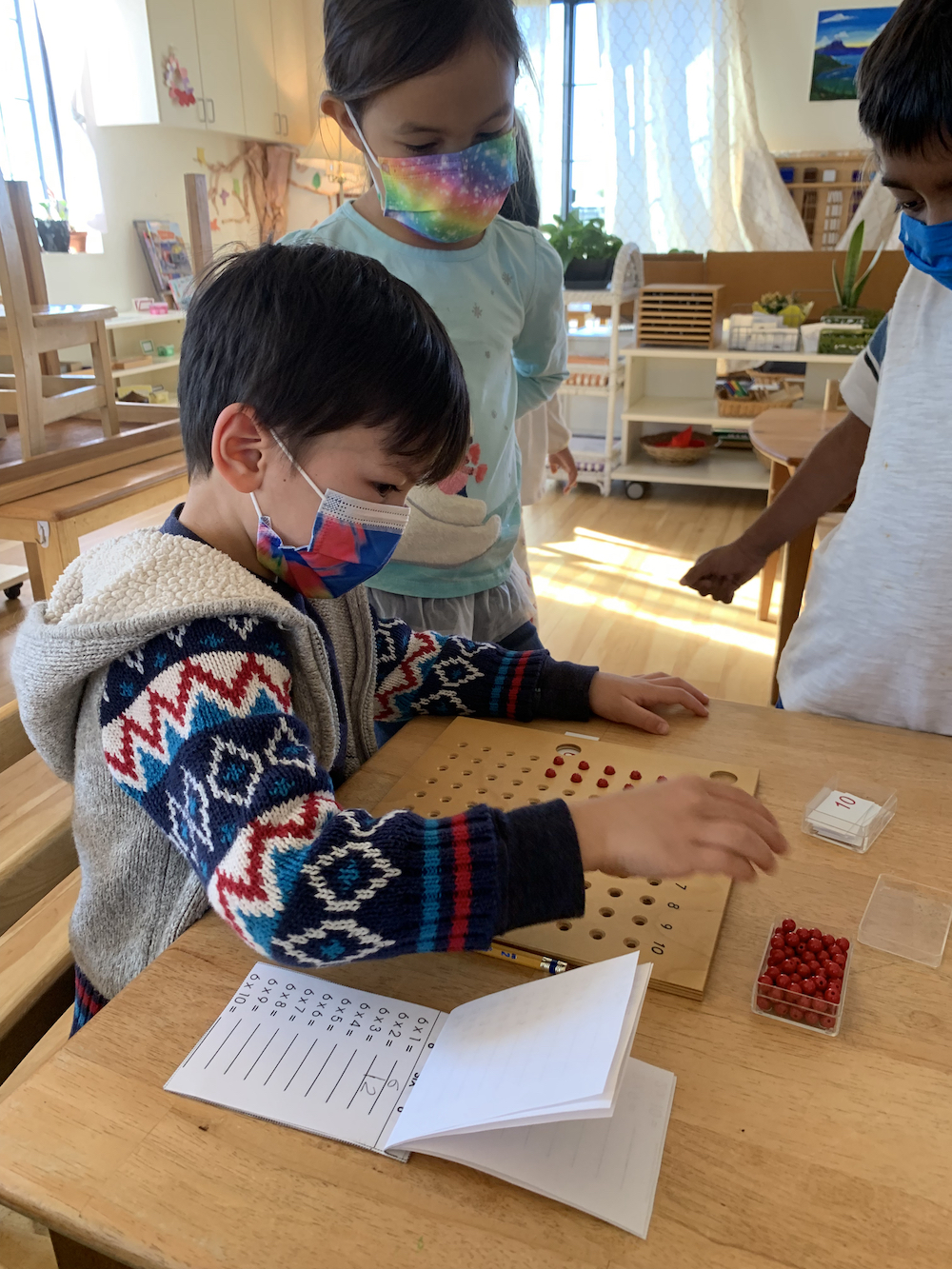(858) 759-0631
Perhaps the best outgrowth of watching a Montessori elementary school in action is seeing how peer-age learning helps younger and older students grow while preventing bullying.
Montessori elementary school teachers engage and embrace two-way student partnerships by pairing children of various ages. That means kids are not all the same calendar year age nor possess the same knowledge level.
In practical terms, peer-age group learning begins in Preschool and is continued throughout Lower Elementary (LE) students in Grades 1-3 and Higher Elementary (HE) students in Grades Four through Six.
Daily interactions build academic, social, and emotional learning for all. In other words, working together creates partnership, trust, emulation, leadership, and mentorship.
Separation Creates Adversarial Relationships
When students are separated by calendar age, invariably, you’ll see the older or biggest kids ‘picking on’ the smaller or younger kids. That’s because there’s limited intersection and interaction between them. So, the big kids move or cut their way to the front of the line or the best seats via their words, actions, or other intimidation.
This proves to be an emotional touchpoint for the younger child because there’s little he can do about it. So, he may get frustrated and angry while the older child gets a false emotional sense of power—both adverse outcomes.
Interactions Build Learning, Partnership, and Leadership
But when an age-range classroom setting is employed, you’ll see positive outcomes. The older or biggest kids pass the little guys ‘know-how’ and ‘how to’ tips cooperatively and collaboratively. Why?
They are looked up to. Older students are more intelligent because they’ve ‘been there, done that’ themselves. Over time, they’ll learn ways to express and illustrate that knowledge via leadership and mentorship—and feel good themselves in the balance.
Conversely, our youngest children—absorbing everything—see how something is done and immediately place it in their repertoire of ‘I can do it myself’ progression. Whether it’s learning math or dual language immersion like other ‘big boys’ or addressing Montessori elementary school projects together, imitation creates emulation. And since the two groups are in it together, a cooperative, collaborative, and communicative framework is developed between them.
All of which decreases the likelihood that one child’s harsh words or intimidating actions will denigrate the relationship between the two parties. Since they learn from each other, socially interact, and emotionally bond with each other, they create empathy with each other!
Summary
Preventing bullying via peer-age learning, interaction, and partnership is far easier when two groups work together rather than being separated by mere calendar age. By building bridges between younger and older kids, the older ones graduate to the next level with a greater sense of self-worth and overall interaction with others. Ultimately, the younger ones grow into the role that their elders have. And they, in turn, teach the next group of youngsters what they know. This fundamental edge is a core outgrowth of a Montessori elementary school setting.

